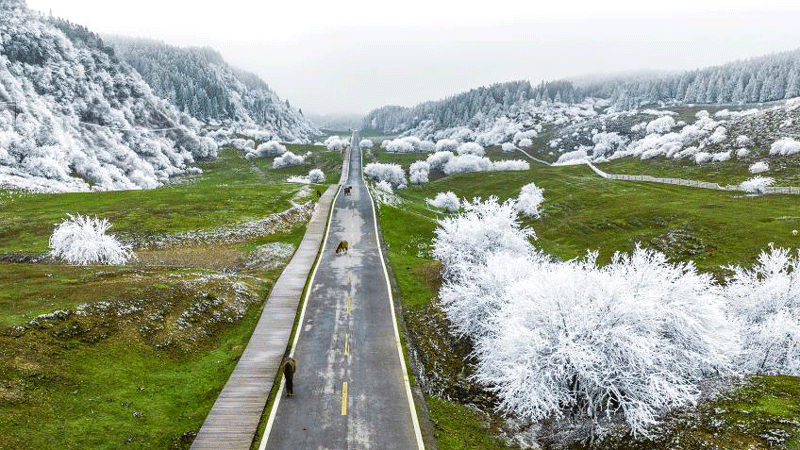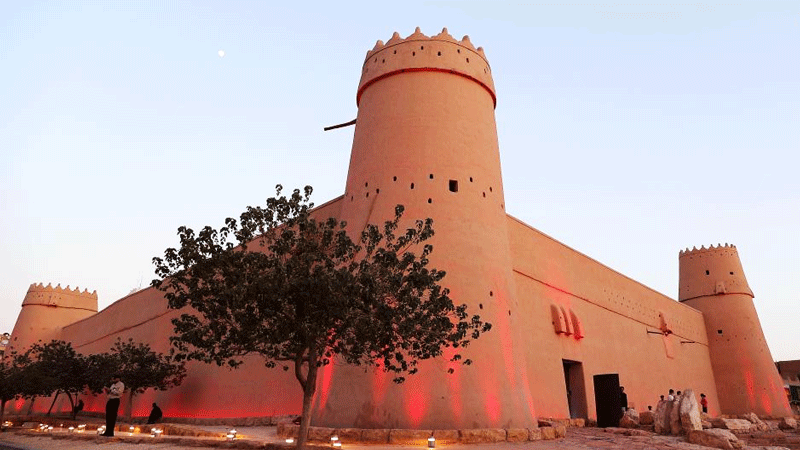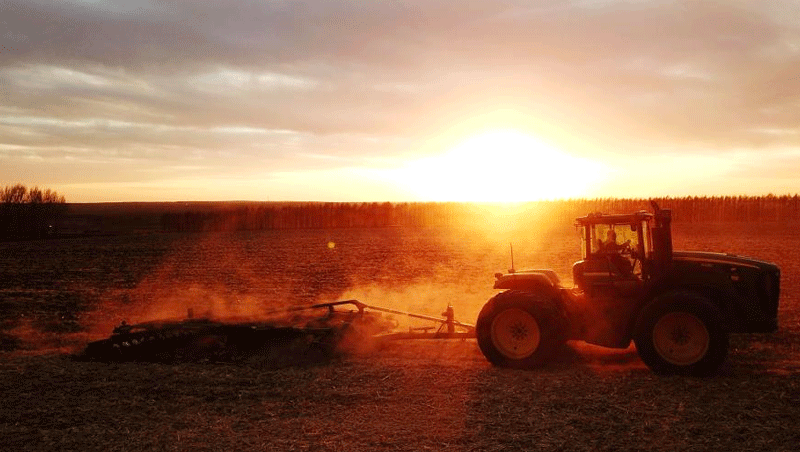A taste of Chinese tea culture
China’s traditional tea-making practices have been added to UNESCO’s list of intangible cultural heritage items.
The item “Traditional tea processing techniques and associated social practices in China” was added to the list at the 17th session of the UNESCO Intergovernmental Committee for the Safeguarding of the Intangible Cultural Heritage, held in Morocco on November 29, 2022.

Two tea farmers pick tea leaves at a tea garden in southwest China’s Guizhou Province. (Photo/Qu Honglun)
Let’s have a taste of Chinese tea culture!
The origins of tea
Tea is believed to have originated in China, and was first recorded in Shennong's Classic of Materia Medica, the first Chinese book about medicinal plants written during the Qin and Han dynasties (221 BC-220 AD). Ancient Chinese people first chewed on raw tea leaves for medicinal purposes, then added them to soups or greens, and brewed tea to drink.
The functions of tea
Ancient books including Shennong's Classic of Materia Medica recorded tea’s positive health effects, such as curing indigestion, improving brain and urinary function, and avoiding fatigue.
Chinese tea’s medical purposes are also recognized in other parts of the world. For example, Myoan Eisai (1141 –1215), a Japanese Buddhist priest, praised the value of tea as a medicine in his book How to Stay Healthy by Drinking Tea. In 2002, Time magazine listed China’s green tea as one of 10 “super healthy” foods.
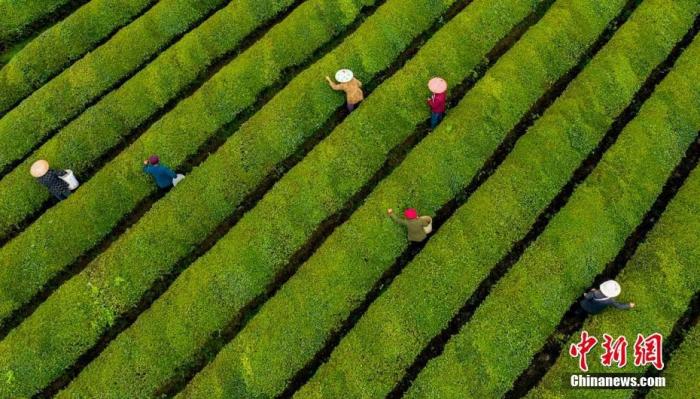
An aerial photo shows farmers picking tea leaves at an organic tea garden in east China’s Jiangxi Province. (Photo/Zhao Chunliang)
The Classic of Tea
The Classic of Tea, written by Lu Yu during the Tang Dynasty (618-907), is the first treatise in China in which knowledge of tea and related practices were elaborated systematically, marking the emergence of Chinese tea culture.
Famous tea lovers in history
Tea has gained widespread popularity since the Tang Dynasty and the Song Dynasty (960-1279), especially in literary circles, including with the famous Chinese poets Bai Juyi, Su Shi, Lu You and Huang Tingjian, who all wrote poems about tea.
Tea making crafts
Since ancient times, Chinese people have been planting, picking, making and drinking tea. Traditional tea processing techniques are mainly found in four major regions for tea production in China, namely, south and north of the Yangtze River, southwest China and south China. Associated social practices, however, are spread throughout the country and shared by multiple ethnic groups.
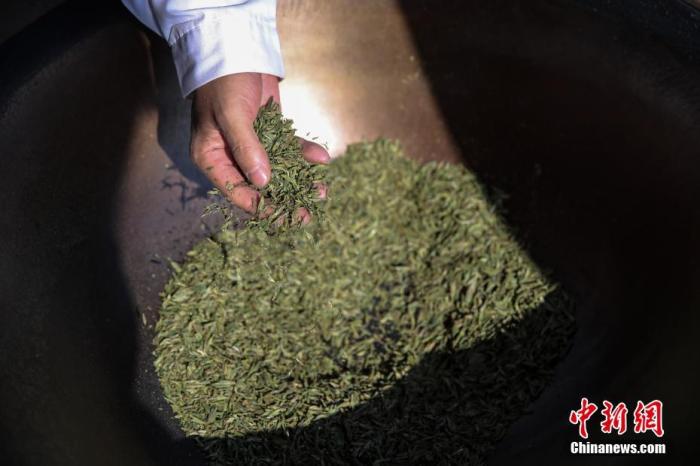
A man fries tea leaves in southwest China’s Guizhou Province. (China News Service/Qu Honglun)
Tea producers have developed six categories of tea: green, yellow, dark, white, oolong and black teas. Together with reprocessed teas, such as flower-scented teas, there are over 2,000 tea varieties in China.
As a common Chinese saying goes, “firewood, rice, oil, salt, sauce, vinegar, and tea” form the seven daily necessities of all households.
Cultural connotations of tea
In China, drinking tea forms an important element of communication, and tea drinking customs reflect Chinese people’s values of modesty, harmony, courtesy and respect.

Foreigners experience brewing tea. (Photo/Zhang Xiaoyan)
Output of tea
In 2020 China ranked first in the world for tea leaves production, producing nearly 2.99 million tonnes. The country’s production and consumption of tea leaves accounted for 47.63 percent and 41.68 percent of the world’s total, respectively.
While the age-old tradition of brewing tea has been well-cherished by the Chinese people, innovation continues to inject new life into the tea industry.
The market scale of tea-based drinks in China reached 279.59 billion yuan (about $39.9 billion) in 2021 and is estimated to exceed 300 billion yuan by 2022, according to data from market consultancy firm iMedia Research.

A tea master brews tea. (China News Service/Yu Jing)
Tea's role in building cultural bridges
Meanwhile, tea has been a means of building peace, friendship and cooperation between China and the world for many hundreds of years, going back to when it was important commodity on the ancient Silk Road and the ancient Tea Horse Road.
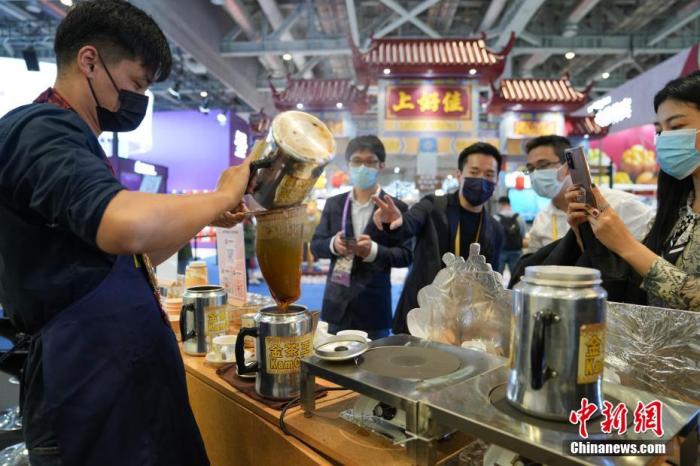
A man makes Hong Kong-style milk tea. (China News Service/Cui Nan)
Photos
Related Stories
- Healthiest teas during winter
- A glimpse of Wuyi rock tea in SE China's Fujian
- The life of a tea maker, steeped in jasmine fragrance
- Wuyishan National Park strikes balance between ecological conservation, local development
- China's traditional tea-making techniques included into UNESCO cultural heritage list
- China's Yunnan passes regulation on protecting centuries-old tea trees
- Pic story: inheritors of tea making technique in Ya'an, China's Sichuan
- Zisun tea: tribute tea in the Tang Dynasty
- China's traditional tea-making enters UNESCO cultural heritage list
- Pu’an county advances rural revitalization by planting white tea trees
Copyright © 2022 People's Daily Online. All Rights Reserved.






